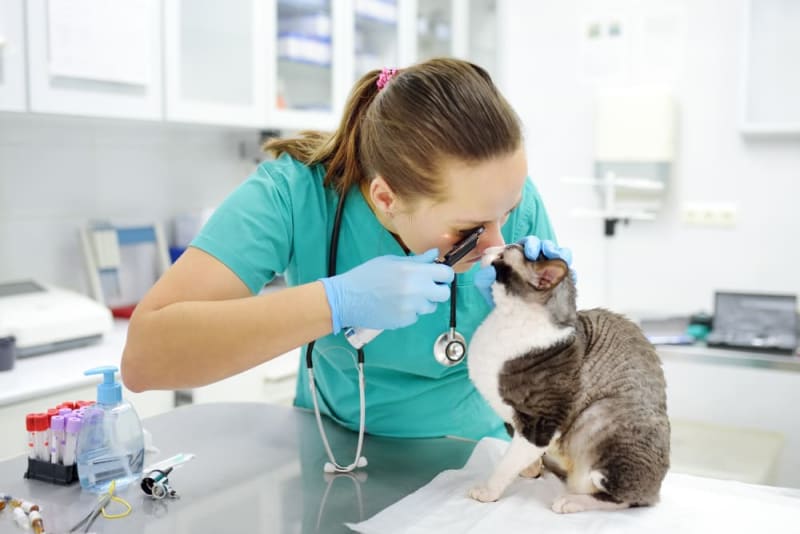Safeguarding the Wellbeing of Veterinary Teams
If you work in the veterinary profession for long enough, you will experience or witness some sort of work-related injury. While veterinary team members play a vital role in taking care of pets and their families, this noble profession has its fair share of hazards that can put their wellbeing at risk.
As we observe National Injury Prevention Day on July 5, it becomes crucial to bring attention to five of the most common hazards in veterinary practice and explore proactive measures that veterinary team members can take to establish a safe working environment and prevent injuries.

Hazard #1: Bites & Scratches
I’ve lost count of how many times either myself or a team member has been bitten or scratched while trying to assist an animal. It just comes with the territory when working with animals. To safeguard against these risks, it’s crucial for veterinary team members to consistently exercise caution, particularly when handling new or anxious animals. Everyone should be familiar with the warning signs displayed by animals to proactively prevent unexpected aggressive behavior. Utilizing fear-free handling techniques, employing safe and effective holding methods, and implementing appropriate sedation when needed are essential measures to prevent injuries.
Hazard #2: Zoonotic Diseases
I remember a time when a veterinary technician I worked with ended up hospitalized after contracting Leptospirosis from one of our patients. It was a stark reminder that veterinary teams are susceptible to zoonotic diseases that can be transmitted from animals to humans. Wearing protective clothing is absolutely essential in preventing the spread of such diseases. It’s highly recommended for veterinary professionals to use gloves, face shields, or goggles, depending on the situation, to minimize direct contact with potentially infectious organisms. Additionally, placing strong emphasis on proper hand hygiene practices and promoting occupational immunizations, such as rabies vaccines, are crucial steps in mitigating the risk of zoonotic disease transmission.
Hazard #3: Needle Injuries and Cuts
When I was a veterinary student, I can still vividly recall the terrifying moment when I accidentally stabbed myself with a needle used for administering euthanasia solution. And I was too scared to tell anyone about it. The truth is, needle injuries and cuts pose a significant risk in veterinary practice. To address this, it’s crucial to provide comprehensive training and education to all veterinary team members, including students and volunteers, fostering a culture of safety and encouraging open communication about these incidents. It’s also essential to take additional protective measures, like using safe handling techniques for needles and sharp instruments and implementing clear communication practices to ensure everyone is aware of sharps or needles nearby.
Hazard #4: Exposure to Dangerous Chemicals, Gases, and Medications
I remember working with a vet tech who unknowingly handled a chemotherapeutic agent while she was pregnant. It was a scary situation that had an impact on the entire team. This highlights the importance of establishing effective protocols and safeguards for veterinary team members who frequently handle chemicals, anesthetic gases, and medications that carry potential health risks if not properly managed. Emphasizing regular hand washing is crucial in reducing the risk of hand-to-mouth exposure. Additionally, providing comprehensive education on anesthetic gases and implementing training in best practices for minimizing exposure are essential for the team’s wellbeing. Lastly, exercising utmost caution when working with medications that are teratogenic or hazardous to humans is vital, ensuring the use of gloves or allowing pregnant or vulnerable team members to avoid handling them altogether.
Hazard #5: Back Injuries
Lifting heavy or large dogs in veterinary practice puts significant strain on the musculoskeletal system, leading to a frequent occurrence of back injuries. I personally know several vet techs who have had to take time off work due to severe back injuries. To mitigate this risk, it is crucial to educate team members about the importance of seeking assistance when lifting heavy animals. Proper lifting techniques should be taught, emphasizing the use of leg and core muscles instead of relying on the back. Whenever possible, utilizing lift tables or other aids can help prevent injuries altogether.
Recognizing and addressing the hazards encountered by veterinary professionals in their daily work is of utmost importance. By implementing protocols that incorporate protective measures, providing essential protective wear and supplies to prevent injuries, and fostering a culture of open communication, veterinary practices can establish a safer working environment for everyone involved.
